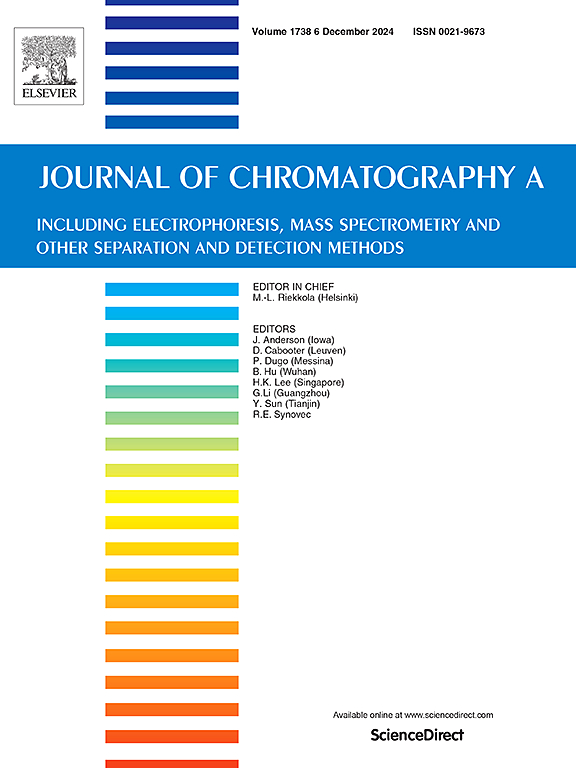Determination of bisphenol analogues in bottled water using deep eutectic solvent and magnetic multi-walled carbon nanotubes followed by ultra-high performance liquid chromatography coupled with tandem mass spectrometry
IF 3.8
2区 化学
Q1 BIOCHEMICAL RESEARCH METHODS
引用次数: 0
Abstract
Bisphenol analogues (BPs) are a class of typical environmental endocrine disruptors (EDCs) that have recently attracted increasing attention with regard to their potential effects on human health. The objective of this study was to develop a method using a magnetic soft material, which consisted of hydrophilic deep eutectic solvent (DES) and magnetic multi-walled carbon nanotubes (MMWCNTs), for the dispersive solid-phase extraction (d-SPE), coupled with ultra-high performance liquid chromatography-tandem mass spectrometry (UHPLC-MS/MS), for the determination of the levels of nine BPs in bottled water. The hydrophilic DES enable the rapid dispersion of MMWCNTs when the material is injected rapidly into the sample solution using a pipette gun. This process can therefore be completed in a relatively short period of time, resulting in an efficient extraction. Under optimal conditions, the limit of detections (LODs) of the method were 0.0003–0.003 μg/L and the limit of quantifications (LOQs) were 0.001–0.01 μg/L. The relative standard deviations (RSDs) of the method were only 2.42–7.59 % for inter-day and 3.71–9.67 % for intra-day. The method demonstrated good reproducibilities and recoveries, rendering it suitable for the determination of BPs in large-volume water samples.
利用深共晶溶剂和磁性多壁碳纳米管,然后采用超高效液相色谱-串联质谱法测定瓶装水中的双酚类似物
双酚类似物(BPs)是一类典型的环境内分泌干扰物(EDCs),近来因其对人体健康的潜在影响而日益受到关注。本研究旨在开发一种使用磁性软材料(由亲水性深共晶溶剂(DES)和磁性多壁碳纳米管(MMWCNTs)组成)进行分散固相萃取(d-SPE)并结合超高效液相色谱-串联质谱(UHPLC-MS/MS)测定瓶装水中九种 BPs 含量的方法。当使用移液枪将 MMWCNT 材料快速注入样品溶液时,亲水性 DES 可使其快速分散。因此,这一过程可以在相对较短的时间内完成,从而实现高效提取。在最佳条件下,该方法的检出限(LOD)为 0.0003-0.003 μg/L,定量限(LOQ)为 0.001-0.01 μg/L。方法的日间相对标准偏差(RSD)仅为2.42%~7.59%,日内相对标准偏差(RSD)为3.71%~9.67%。该方法重现性好、回收率高,适用于大体积水样中溴化萘的测定。
本文章由计算机程序翻译,如有差异,请以英文原文为准。
求助全文
约1分钟内获得全文
求助全文
来源期刊

Journal of Chromatography A
化学-分析化学
CiteScore
7.90
自引率
14.60%
发文量
742
审稿时长
45 days
期刊介绍:
The Journal of Chromatography A provides a forum for the publication of original research and critical reviews on all aspects of fundamental and applied separation science. The scope of the journal includes chromatography and related techniques, electromigration techniques (e.g. electrophoresis, electrochromatography), hyphenated and other multi-dimensional techniques, sample preparation, and detection methods such as mass spectrometry. Contributions consist mainly of research papers dealing with the theory of separation methods, instrumental developments and analytical and preparative applications of general interest.
文献相关原料
公司名称
产品信息
阿拉丁
choline chloride
阿拉丁
urea
阿拉丁
glycerol
 求助内容:
求助内容: 应助结果提醒方式:
应助结果提醒方式:


